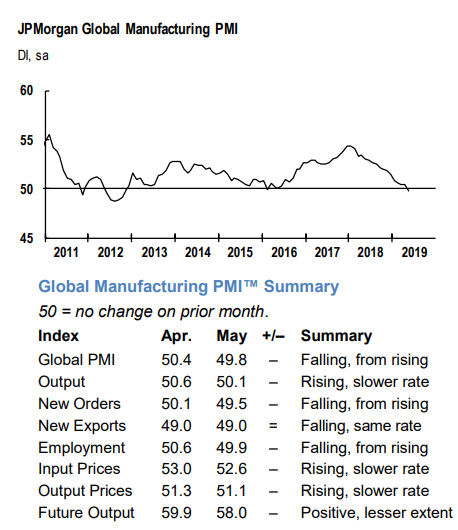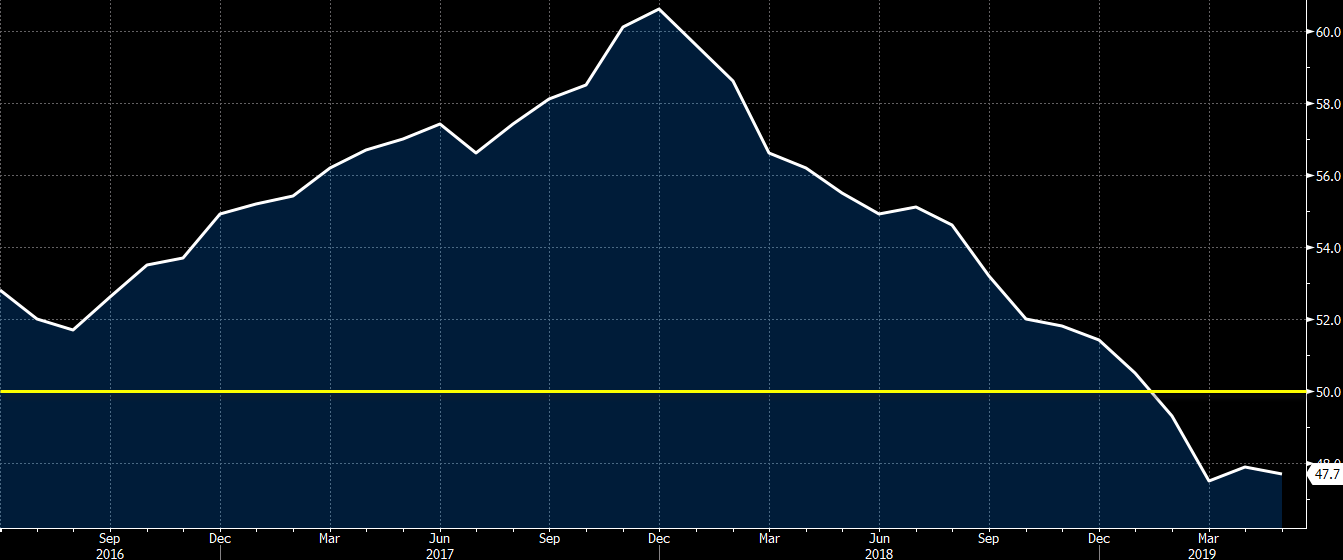Chinese May month 2019 inflation
- expected 2.7% y/y, prior 2.5%
- 0.0% change m/m
- expected 0.6% y/y, prior 0.9%
- +0.2% m/m

The US May non-farm payrolls figure disappointed on Friday with a headline figure of +75k jobs vs 175k expected. The prior +263k reading was revised down as well to +224k. The avg hourly earnings fell to +0.2%m/m vs +0.3%m/m expected and +3.1% y/y vs +3.2% y/y. Adam pointed out on Friday that this is the weakest four month period of jobs data since 2012. It is no surprise to us that the soft earnings and falling jobs is going to be a concern for the Fed.However, at the start of this week the probability of a rate hike for July was being priced at a 80.4% probability. Breaking that down that is a 66.6% chance of a 25bps point fo July and a 13.8% chance of a 50bps cut.

Pushing the date out further to September sees a 93.7% chance of a rate cut in September and just under 50% chance of a 50bps rate cut at that. So, the question is, ‘Is a rate cut now a foregone conclusion for the Federal Reserve at their July meeting?’ “If not then, then when?’ A penny for your thoughts please…

The IMF will have a press briefing on the results of their report shortly. You can watch it HERE.

South Africa’s economy suffered its largest slump in a decade during the first months of the year, as severe blackouts at Eskom, the struggling state power utility, took their toll.
Output in Africa’s most industrialised nation dropped by an annualised 3.2 per cent in the first quarter, its largest quarterly fall since 2009, according to official statistics on Tuesday.
The decline contrasts with growth of 1.4 per cent during the last quarter of 2018, and was worse than the 1.4 per cent contraction that economists expected.
The rand dropped 1 per cent against the US dollar after the release.
The contraction will underline a failure by President Cyril Ramaphosa’s ruling African National Congress to fix Eskom, which imposed the country’s worst ever rolling blackouts during the first quarter.
Eskom is buckling under more than $30bn of debt, breakdown-prone power stations and rampant corruption that is a legacy of misrule under the former president Jacob Zuma.
Power-intensive industries such as manufacturing and mining recorded the biggest drops in activity in the quarter.
Mining activity fell by more than 10 per cent while manufacturing dropped 8.8 per cent.
Eskom generates nearly all of South Africa’s electricity but has failed to maintain its ageing coal plants while spending billions of dollars on faulty new stations.
Since the blackouts peaked in March, the utility has gradually recovered its ability to generate power, but its finances remain precarious. Eskom received a $5bn state bailout in February but has since needed further emergency cash to pay debts.
Mr Ramaphosa has announced a plan to break up the utility’s monopoly into smaller state-owned firms but this faces resistance from the ANC’s trade union allies.


